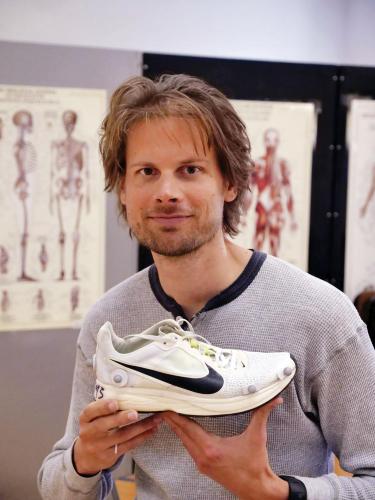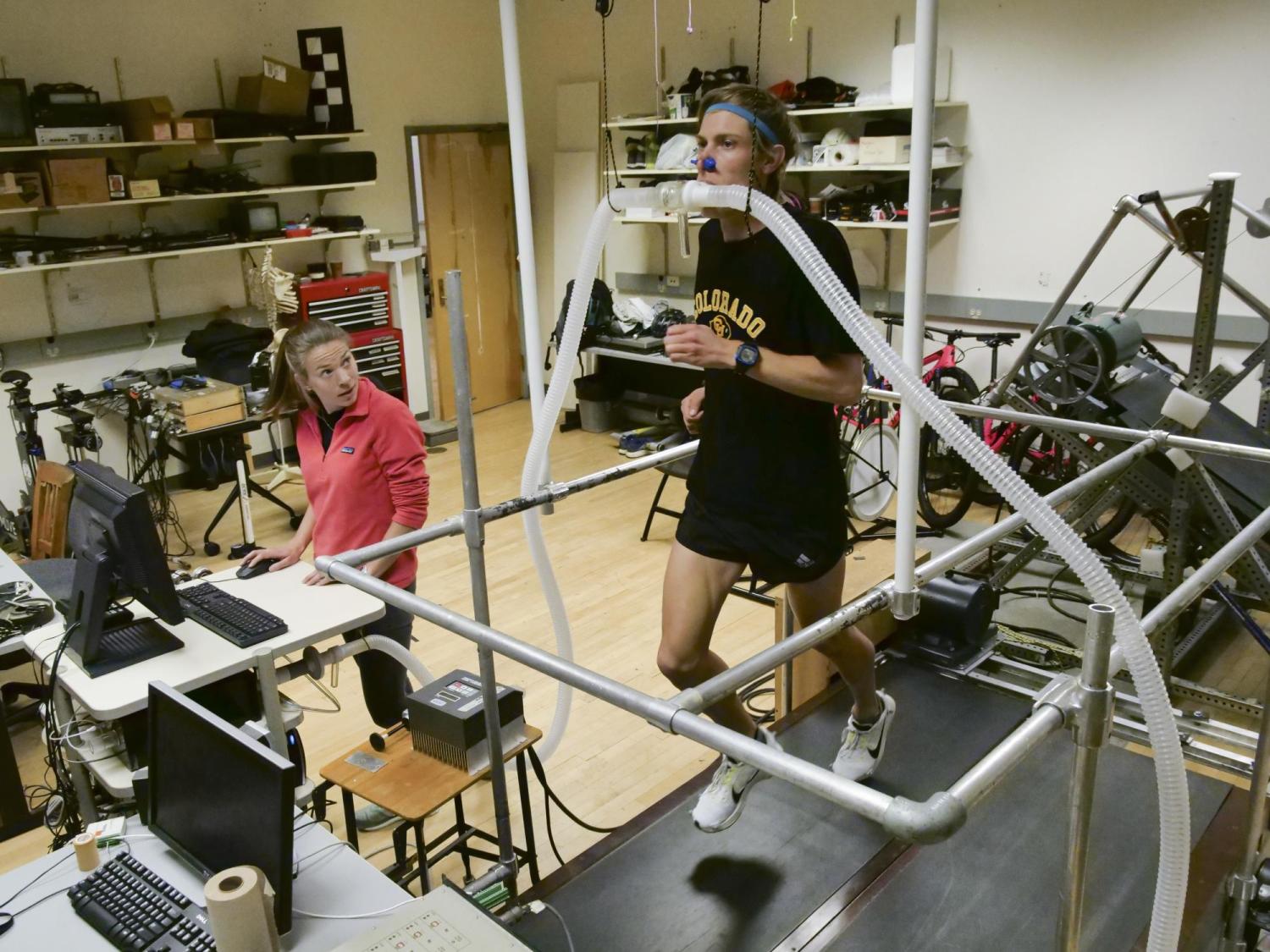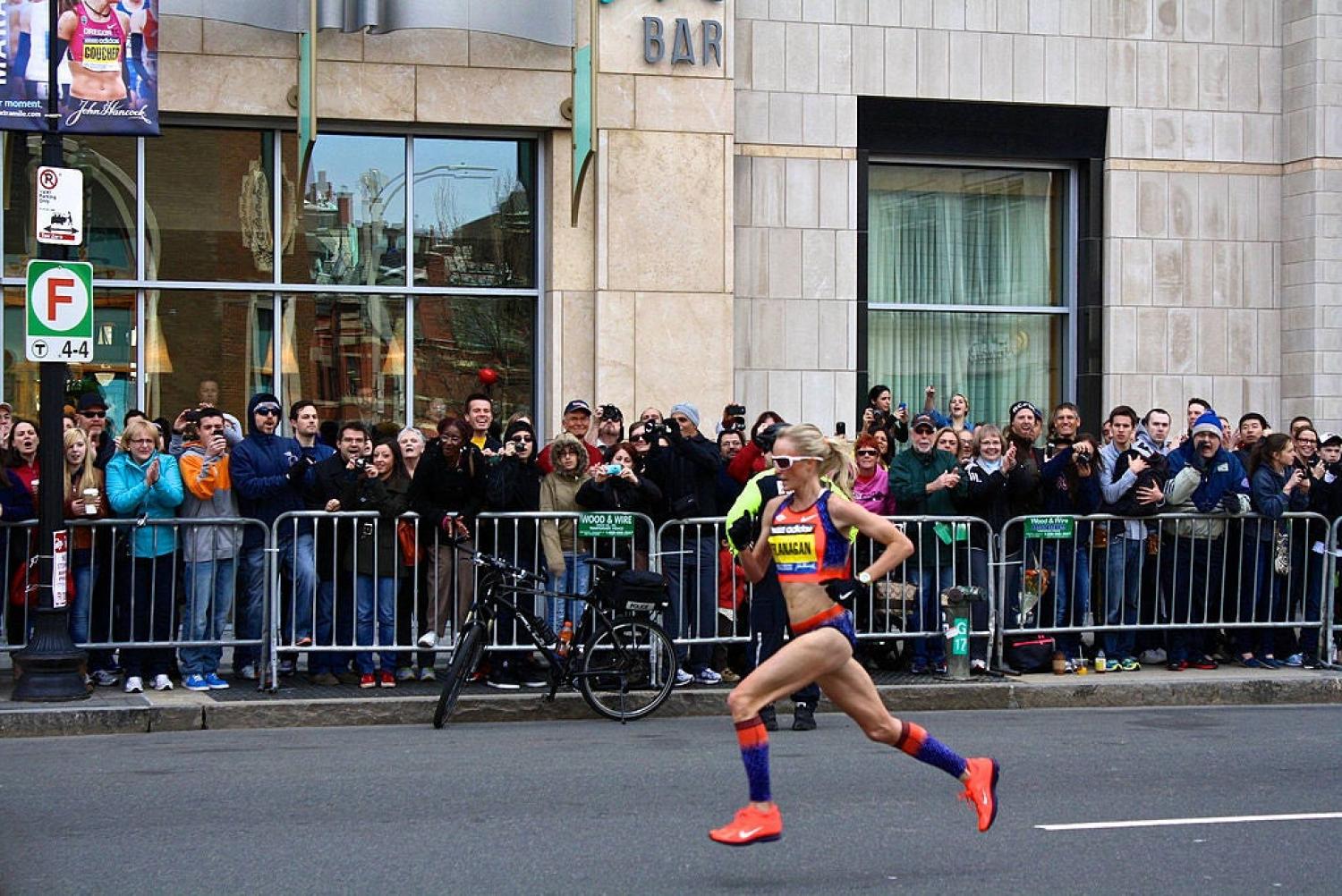The world's fastest shoe?

What’s in a name? Ask Rodger Kram, director of CU Boulder’s Locomotion Lab.
Long before Nike unveiled its Zoom Vaporfly 4%, Kram was busy testing how fast the now-famous shoe really was. Nike had come to Kram with a request: They’d developed a shoe they suspected could make running significantly more efficient but needed scientific evidence before making that claim.
Kram enlisted 18 super-fast men and ran tests comparing their performance while wearing the prototype to that in two other high-end shoes. “Every day at every speed, every runner used less energy with the prototype,” Kram said. On average, 4 percent less. That’s enough to make a sub-2-hour marathon possible for the first time.
Nike ran with the name. So did Boulder-based Shalane Flanagan, who won the 2017 New York City Marathon in her “4%s.”


Principal investigator
Wouter Hoogkamer
Funding
Nike
Collaboration + support
Rodger Kram; Shalaya Kipp; Integrative Physiology; CU Boulder Locomotion Lab

